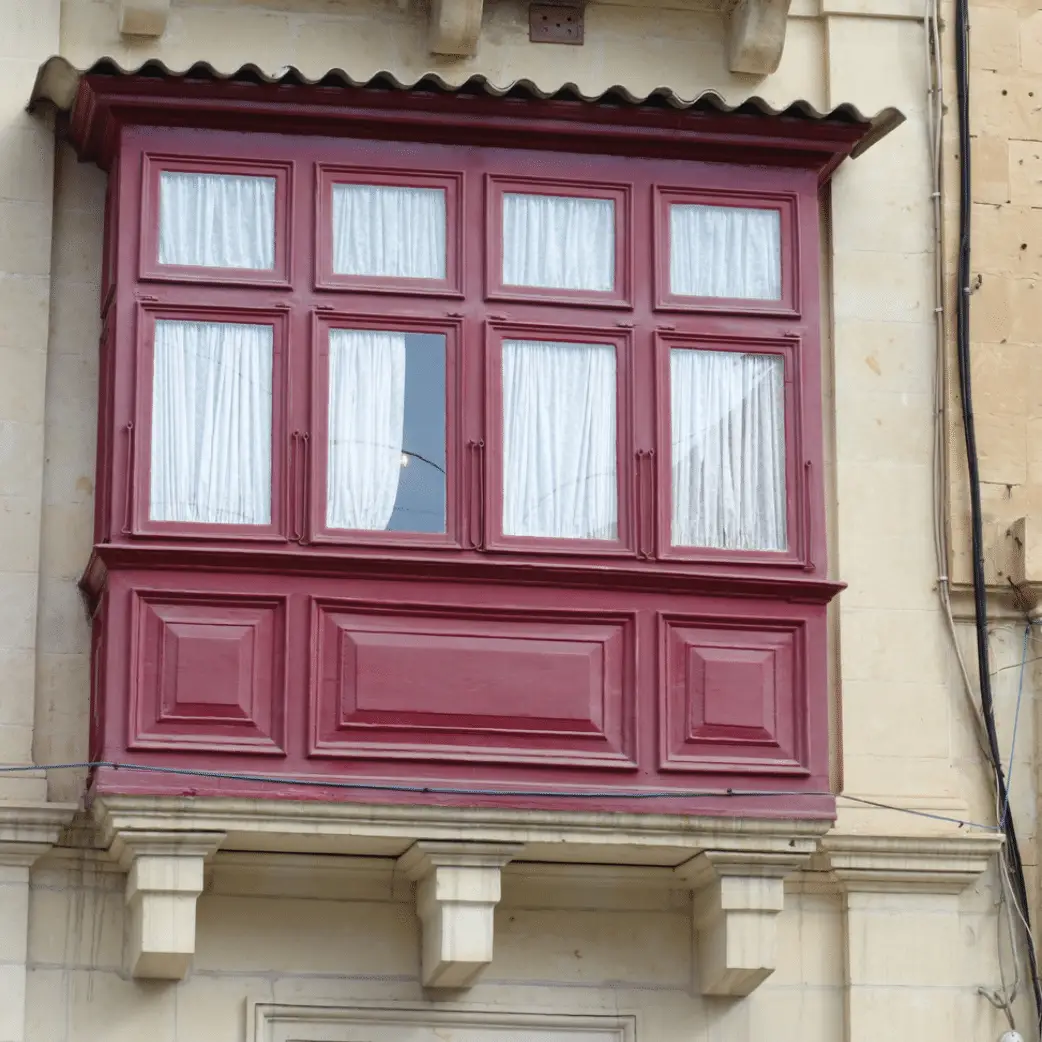Discovering Malta’s Traditional Balconies

The wooden balconies in Malta, often seen as emblematic of traditional Maltese architecture, are a testament to the islands’ rich cultural history and diverse influences. These balconies, known for their vibrant colors and intricate designs, significantly enhance the urban landscapes of Malta and Gozo.
Historical Significance and Origins
The evolution of wooden balconies in Malta can be traced back to different historical periods, with significant changes in their function and design reflecting the social and cultural dynamics of the time. During the Baroque period in the late 17th century, balconies became fashionable across Europe, including Malta, symbolizing status and social class.
The exact origins of the closed wooden balcony in Malta are somewhat obscure, but it is widely believed that they were influenced by the North African and Moroccan ‘Muxrabija’ (or mashrabiya), a type of enclosed balcony with small openings. The term ‘Gallarija’ in Maltese reflects this historical connection, even though Maltese balconies have since developed a unique character of their own.
Design and Materials
Maltese wooden balconies are typically made from red deal, a type of softwood that is often painted in traditional colors such as dark green, navy blue, and dark red. These colors help create a harmonious and unified appearance, crucial in maintaining the aesthetic and historical integrity of urban environments, especially in conservation areas and for scheduled buildings.
The design of these balconies varies widely, ranging from simple, functional structures to highly ornate ones with intricate carvings and decorative elements. Despite their diversity, they can be broadly categorized into open and closed types. Open balconies, made from stone or wrought iron, are the oldest and are particularly common in historic areas like Mdina and Gozo. Closed wooden balconies, on the other hand, became more widespread in the 18th century, especially in urban areas like Valletta.
Functional Benefits
Beyond their visual appeal, wooden balconies in Malta offer several practical benefits. They provide a semi-private space for residents, akin to a personal viewing box overlooking the street. This feature has its roots in the Muxrabija but has evolved to suit Maltese urban life. Additionally, these balconies help with climate control, allowing natural light to enter while mitigating extreme heat and cold.
Preservation and Future
The latter half of the 20th century saw a decline in the use of traditional materials and designs, as modern building practices favored more “practical” but less aesthetically pleasing alternatives. However, recent efforts to preserve Malta’s architectural heritage have led to stricter regulations and renewed interest in traditional balcony designs. According to the Malta Environment and Planning Authority, stone, wooden, and wrought iron balconies should be maintained and restored, and replacements must adhere to the original design and materials. Non-traditional materials are not acceptable, and the enclosure of open balconies in a series is generally prohibited to preserve the streetscape rhythm.
Conclusion
The wooden balconies of Malta are more than just architectural elements; they are a vibrant part of the islands’ heritage. Their rich history, diverse designs, and practical benefits make them an enduring symbol of Maltese culture. As efforts to preserve and celebrate these balconies continue, they remain a testament to the unique blend of influences that have shaped Malta over the centuries.
On CheckYourTraders.com, you can find various carpenters who specialize in restoring old Maltese balconies or creating and installing new ones identical to traditional versions. To avoid contacting these carpenters individually, you can use our quote request system by filling out your requirements and contact details. Several businesses will then send you quotes, simplifying the process of finding the right expert for your project.